— Matthew 16:26
Well, that depends on the value of the whole world, now doesn’t it?
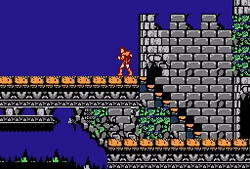 Castlevania was the start of the Castlevania franchise, a series of games that stretch from 1986 to the present. You want to claim Castlevania is dead? Fine, but know that “undead” and “returns every generation” is kind of the whole point of some stories. Regardless of Konami’s current health, Castlevania (1) started it all with a man, a whip, and a vampire with poor interior decorating skills.
Castlevania was the start of the Castlevania franchise, a series of games that stretch from 1986 to the present. You want to claim Castlevania is dead? Fine, but know that “undead” and “returns every generation” is kind of the whole point of some stories. Regardless of Konami’s current health, Castlevania (1) started it all with a man, a whip, and a vampire with poor interior decorating skills.
To look back, it’s kind of amazing how much of Castlevania was established right there in its first game. Mermen, zombies, giant bats, medusa heads, and even all the significant subweapons premiered right alongside the Belmont clan. The iconic “entering the castle” opening and zombie-filled corridor has been repeated ad nauseam, and even more minor elements like wall meat and level clear celebratory orbs seem to have stuck around through the ages. Death is all around, particularly in the penultimate level, whether it’s the 21st century or some time back in The Crusades.
But then there’s the money thing.
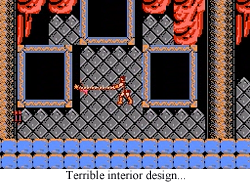 Castlevania was released in the age of the score, those halcyon days when, in the transition from arcade to home console, every game had to have a “kept” score. Presumably, this was to make it seem important to attain the “high score”, and some additional game replays could be wrung out of “sure, you beat it, but now try to beat it better.” And, in a number of games, your score could be increased by gathering some kind of collectible, whether it be money or strange little dots. Sometimes there was an explanation: Mario collects coins, because an extra life may be purchased for a hundred (this is likely why toads are always so nervous: they know the exact value of life in the Mushroom Kingdom). Mega Man accumulated orbs in his first adventure, but forsook the process by the time mecha dragons floated into the picture. Monster Hunter Arthur grabbed bags of loot throughout the Demon Realm, and Scrooge McDuck was just plain hording his wealth. Anybody know a place I can cash in this moon cheese?
Castlevania was released in the age of the score, those halcyon days when, in the transition from arcade to home console, every game had to have a “kept” score. Presumably, this was to make it seem important to attain the “high score”, and some additional game replays could be wrung out of “sure, you beat it, but now try to beat it better.” And, in a number of games, your score could be increased by gathering some kind of collectible, whether it be money or strange little dots. Sometimes there was an explanation: Mario collects coins, because an extra life may be purchased for a hundred (this is likely why toads are always so nervous: they know the exact value of life in the Mushroom Kingdom). Mega Man accumulated orbs in his first adventure, but forsook the process by the time mecha dragons floated into the picture. Monster Hunter Arthur grabbed bags of loot throughout the Demon Realm, and Scrooge McDuck was just plain hording his wealth. Anybody know a place I can cash in this moon cheese?
Simon Belmont was no different from his contemporaries. Simon may find money bags all over Dracula’s Castle, and, considering the denominations, he should be pretty well off by the time this horrible night is complete.
Except… why? Why is Simon Belmont, a mystical combination of Conan the Barbarian and Van Helsing, looting a dilapidated castle of its few remaining treasures?
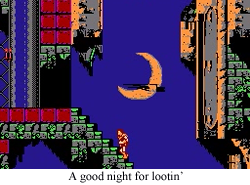 First, to shrug off any cries of “it’s just a gameplay quirk of the time”, consider that future “modern” Castlevania games often feature a shop of some kind. Symphony of the Night predominantly started the trend, but it seems like every following Dracula hunt featured a “mundane” character that simply wanted all the cash available to trade for a cruddy rack of lamb or potion. The prices seem a little beyond MSRP, but I suppose that’s the benefit of location: when you’ve got werewolves at the door, a healing potion suddenly becomes a lot more valuable. Regardless, the point is clear: Dracula’s Castle is loaded with loot, and an enterprising shop keep can really clean up.
First, to shrug off any cries of “it’s just a gameplay quirk of the time”, consider that future “modern” Castlevania games often feature a shop of some kind. Symphony of the Night predominantly started the trend, but it seems like every following Dracula hunt featured a “mundane” character that simply wanted all the cash available to trade for a cruddy rack of lamb or potion. The prices seem a little beyond MSRP, but I suppose that’s the benefit of location: when you’ve got werewolves at the door, a healing potion suddenly becomes a lot more valuable. Regardless, the point is clear: Dracula’s Castle is loaded with loot, and an enterprising shop keep can really clean up.
But Simon has no such ally, so he’s hording every last dime for himself. Fair enough, I suppose. Not like he needs anything but an axe and whip to survive, anyway.
Oh, but I can already hear you, “What of Castlevania 2, hm? Simon does a fair bit of buying in that game! He even starts with enough purchasing power for some holy water!” Well guess what, smart guy, Simon isn’t using currency in Castlevania 2, he’s trading hearts for all purchasable items. This makes a certain amount of sense, as he’s exclusively buying gear that will aid him in vampire (parts) hunting, so why not trade raw monster guts for that stake? Couple this with a purchasable “infinity giant diamonds”, and it’s pretty clear that the local hunter economy is based not on actual dough, but whatever one can obtain while slaying a gaggle of skeletons.
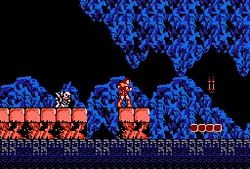 But it’s worth looking at Castlevania 2, too. Castlevania 2 is the only other adventure featuring Simon Belmont. Simon may have stared in a number of Castlevania games, but they were all “remakes” of the original quest. Simon enters castle, re-kills an undead monstrosity or two, slays Dracula, and then retreats to a nearby cliff to count his winnings. Tell the same story over and over again, it doesn’t say what happens next, which is the exclusive domain of (the surprisingly never remade) Castlevania 2. By the time of C2 (seven years later), Simon is forced to fight the forces of Dracula once again thanks to a curse inflicted upon the poor lad during their (incorrectly designated) final battle. Despite the fact that Simon saved everyone from an unending, bloody death, the people of Castlevania do very little to aid Simon, and often confuse the adventurer with tales of head banging and graveyard ducks.
But it’s worth looking at Castlevania 2, too. Castlevania 2 is the only other adventure featuring Simon Belmont. Simon may have stared in a number of Castlevania games, but they were all “remakes” of the original quest. Simon enters castle, re-kills an undead monstrosity or two, slays Dracula, and then retreats to a nearby cliff to count his winnings. Tell the same story over and over again, it doesn’t say what happens next, which is the exclusive domain of (the surprisingly never remade) Castlevania 2. By the time of C2 (seven years later), Simon is forced to fight the forces of Dracula once again thanks to a curse inflicted upon the poor lad during their (incorrectly designated) final battle. Despite the fact that Simon saved everyone from an unending, bloody death, the people of Castlevania do very little to aid Simon, and often confuse the adventurer with tales of head banging and graveyard ducks.
Why? Why are the people of Castlevania as hostile to Simon as the monsters that emerge from poison bogs?
The answer is simple: Simon robbed the hell out of Castlevania, and blew it all on a seven year vacation.
Dracula is a bad guy, right? And he’s got a literal army of the undead. The undead don’t need much (what with being mostly dead and all), so that’s an army that doesn’t need to be fed, clothed (skeletons are notorious exhibitionists), or even desire standard living (ha!) conditions. Yet Dracula likely accrues a lot of cash from his victims, because, hey, who walks around broke? Going to suck the blood out of a guy, why not see if he’s got some pocket change on ‘em? Torment a country long enough, and you’ve got a pile of coins just laying around. What to do? Well why not hang your bags of gold from the candles as a clear sign that you’re the king of this castle? Check it: I’ve got my bling out in the open, and whatcha gonna do about it? Go ahead, grab that cash, you’ll be fleaman chow by morning.
But Simon, brave hero of his people, took that money back. He whipped every candle, murdered every merman, and reclaimed the riches of Castlevania.
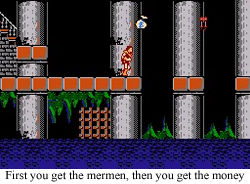 Except… he didn’t share.
Except… he didn’t share.
Again, there’s a seven year gap between Castlevania and Castlevania 2. As of Castlevania 2, the people of Castlevania treat Simon as a stranger. There is no “this is my house” or “this is my family”, he’s just here in the kingdom like the Warriors of Light that wandered into Cornelia. It’s pretty clear that Simon has been away for a while. Where? Well, where would you go if you had an entire kingdom’s worth of treasure and just spent a night in a dank, dilapidated castle? The answer is, clearly, someplace sunny. I can’t speak to the vacation spots of 1691, but I’m pretty damn sure there had to be somewhere with beaches and a complete lack of medusas within traveling distance. You can hire a pretty fast carriage ride with enough gold to support entire towns.
Simon knew about his curse. You don’t just forget about wounds incurred while battling an immortal bloodsucker, but he did his best to ignore any issues for nearly a decade. After all, what’s the point in being alive if you have to spend it in a town constantly trying to sell you stupid multicolored crystals? Screw that noise, blow their savings on another daiquiri, and, if the curse gets to be too much, then come back and toast those Dracula bits. Besides, it’s not like that would be that hard. It’s not like the people of Castlevania would hold a grudge, and hide Dracula’s various organs all over the countryside out of spite. That would be ridiculous.
So what profit is it to a man, if he gains the whole world, but loses his own soul? I dunno, a seven year vacation sounds pretty alright. I can barely score a three-day weekend, I think Simon had a pretty good life there for a while. And it all worked out okay in the end, right? Simon survives 66% of Castlevania 2 endings, and that ain’t bad. Let the grandkids deal with the monsters, it’s time for another appletini.
FGC #194 Castlevania
- System: Nintendo Entertainment System, and probably more systems than I can count thanks to various ports. If we include remakes, it’s every system ever. Probably. Commodore 64 is somehow in there, at least.
- Number of players: There might be score-keeping in Castlevania, but there isn’t a vestigial 2 player co-op mode. Only one vampire killer here.
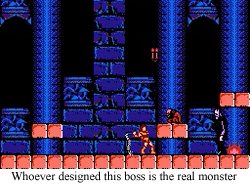 Favorite Boss: I’m going to go with Medusa because it’s the only boss that doesn’t strike mortal fear into my heart. Frankenstein’s Monster and Death are both nearly impossible in this game, and, while I know what to do at this point, there’s still far too much stress even knowing I’m approaching those guys.
Favorite Boss: I’m going to go with Medusa because it’s the only boss that doesn’t strike mortal fear into my heart. Frankenstein’s Monster and Death are both nearly impossible in this game, and, while I know what to do at this point, there’s still far too much stress even knowing I’m approaching those guys.- What about Giant Bat: If you get demoted to regular monster by the last level, you don’t count.
- An end: The ending of Castlevania displays a “cast roll” that seems to imply that Castlevania was simply a movie/play with ersatz horror movie actors. This was cut from later releases, probably because Altered Beast did it better.
- Did you know? There are unused items in Castlevania’s sprite maps. Everyone knows you can obtain a crown, treasure chest, and moai head through careful searching, but there are also sprites for women’s shoes, coffee, a letter (sealed with a heart), and… a basket of kittens. I would play a Castlevania game that was just a Belmont escorting a basket of kittens through the castle.
- Would I play again? Yes! …. Wait, no. Castlevania 3 still exists. Almost forgot.
What’s next? Random ROB has chosen… Drill Dozer for the Gameboy Advance. Get your rumble ready! Please look forward to it!
Eh, Frank’s not that bad. It’s just a matter of getting the proper timing down to keep Igor out of the picture. Death though…I still hate that axe knight hallway.
Anyway, I haven’t looked at Castlevania quite the same way since I realized the game’s similarities to Ghosts’N’Goblins. The macabre theme, the fixed jumps, the much more mobile enemies, and the weapons other than your lance/jump being the following: a dagger thrown forward, a torch/holy water that lights the ground on fire, an axe that travels in an upward arc. And while they function differently (short ranged projectile buster vs. modestly ranged boomerang), both games also feature a throwing cross (shield in US GnG) as a weapon.
Of course, we know which game was the one that ended up spawning more sequels and clones, and it ain’t the one that required you to beat it twice for a proper ending.
[…] watch an episode of Aqua Teen Hunger Force. Now we can all move on to more important matters, like banishing Dracula or […]
[…] animated likes of Dragon’s Lair on the NES, and, honestly, nobody really cared. Contra was fun. Castlevania was fun. Mega Man was fun. Dirk the Daring was a legend in his time, but he was a flash in the pan […]
[…] Castlevania follows a similar Grandmaster/Ganon revives, hero shows up to trash the place cycle, but at least Dracula gets genre savvy pretty early in that environment. If we look at one of the earliest Castlevania games, Castlevania Adventure 2, we’ll find a Dracula that has already identified “the Belmont problem”, and started kidnapping wee Belmont tots to further his own agenda. And then we’ve got Shaft controlling Richtor, who explained something about creating an endless cycle of vampire hunter death or whatever before some dhampir dork smacked a sword into his face a couple hundred times. And by the time Julius Belmont is ready to seal Dracula in an eclipse, the Belmont name has been hidden from the public for ages, because Drac figured out this whole “phone book” technology thing, and “Morris” is totally not in the B section. […]
[…] but back in the early times of 8-bit adventures, eyes were a luxury some heroes couldn’t afford. Simon Belmont? No eyes. Bill & Lance? No eyes. Orin the Falconer of 8 Eyes? Barely got eyes. OG Pac-Man is […]
[…] more than a few protagonists for a coin or two. It doesn’t matter if this is a temple or a haunted mansion, there’s a minotaur. Davey might go the extra kilometer by including Plato, but his visit with […]
[…] Did you know? M. Thorson made a full thread on Twitter about all the ways Celeste is designed to “feel right” for the player. I’m just going to go ahead and link to it rather than recount the full details, so just be aware that there is an inordinate amount of care involved in the creation of a good platformer. Also, “coyote time” is something that should be applied to every platformer ever. Looking at you, Castlevania. […]
[…] ever be released. This was a situation where the designers took a game that was already difficult (Castlevania), massaged it until it was longer and harder, and then made it burst with a continual “arcade […]
[…] happening here: Death’s multiple appearances in the Castlevania franchise may be the most iconic in gaming, and it all started here. You can’t have a decent […]
[…] the DLC level that is just the entirely of Castlevania 1 as one complete map is the best, right? Oh, […]
[…] art team pulled that one off with aplomb. Frankly, it seems almost crazy to say this, but the Castlevania series could learn a lot about “spooky” environments and monsters from […]
[…] that played the earlier Konami titles is well aware of the “joys” of accidentally ditching your holy water for a stupid dagger). And these are all improvements! Joe and Mac for the Super Nintendo is the superior Joe and Mac […]